The weight of responsibility that every parent has to care for their child is unimaginable. Households with children that are all minors often experience the most difficulty. In 2017, Child…
continue reading
47+ Sample Affidavit Forms
-
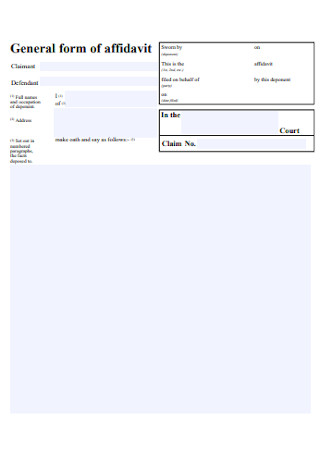
General Form for Affidavit
download now -

Affidavit Cum Consent Form
download now -
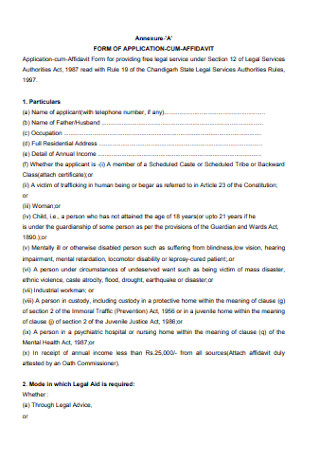
Form for Application Cum Affidavit
download now -

Exam Affidavit Form
download now -

Payroll Check Affidavit Form
download now -

Affidavit of Proof Identity Form
download now -

Affidavit of Claimant Form
download now -

Affidavit of Documents Form
download now -

Money Order Affidavit Form
download now -

Sample Affidavit Form
download now -

Affidavit of Proof of Identity Form
download now -

Affidavit of Income Form
download now -

Eligible Non-Citizen Affidavit Form
download now -

Affidavit of Human Service Form
download now -

Affidavit Credible Witnesses Form
download now -

Personal Identification of Affidavit Form
download now -

Residency Affidavit Form
download now -

Affidavit Regarding Citizenship Form
download now -

Travel Program Affidavit Form
download now -

Identity Theft Notification and Affidavit
download now -

Affidavit of identification Witness Form
download now -

Affidavit Submit Form
download now -

Dallas Financial Affidavit for Form
download now -

Affidavit of Financial Support Form
download now -
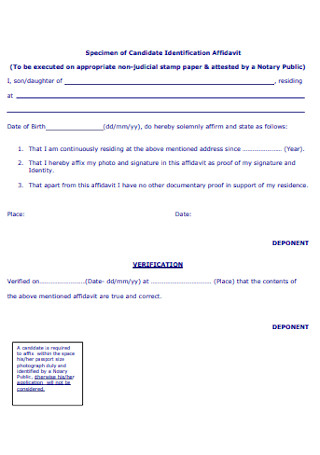
Specimen of Candidate Identification Affidavit
download now -

Affidavit of Category Form
download now -

Student Affidavit of Identity Form
download now -

Affidavit of and Receipt Filing Form
download now -

Affidavit of Identity Order Form
download now -

Corrective Affidavit Form
download now -
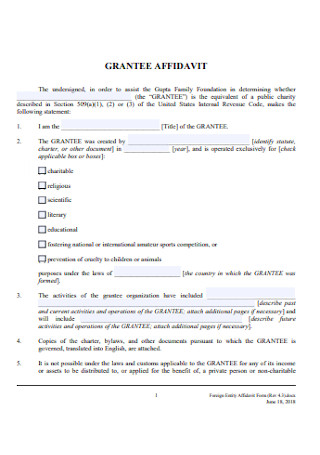
Grantee Affidavit Form
download now -

General Affidavit Form
download now -

Fraud Affidavit Form
download now -

Affidavit of Domicile Form
download now -

Affidavit of Identity Business Form
download now -

Formal Affidavit of Identity Form
download now -

Out Affidavit Form
download now -

Small Estate Affidavit
download now -
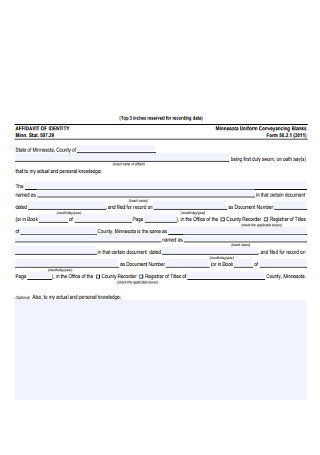
Blank Affidavit of Identity Form
download now -

Formal Affidavit of Form
download now -

Affidavit Proof of Student Form
download now -

Affidavit and Check Forgery Form
download now -

Affidavit of Revenue Department Form
download now -

Card Residency Eligibility Affidavit Form
download now -

Affidavit of Vessel Ownership Form
download now -

Blank Affidavit Form
download now -

Hardship Affidavit Form
download now -
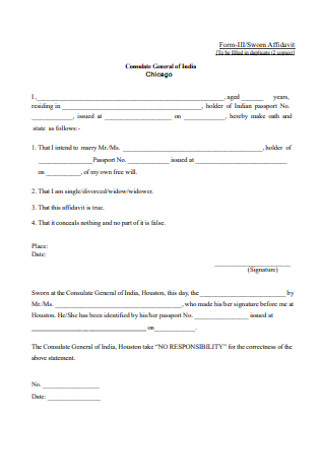
Sworn Affidavit Form
download now
What Is an Affidavit Form?
An affidavit form is a sworn statement of legal value made in writing. Court proceedings or negotiations commonly utilize the use of affidavits. The person who writes in the affidavit form is the affiant. The validity of the testimony relies on the person presenting it, whether it is voluntary and without coercion. In signing for an affidavit, the person or the affiant asserts the gathered information is genuine, and the person who presented it has personal knowledge of the facts and details shown in the affidavit report. In signing the declaration, the affiant affirms they are competent to testify if the court requests their presence regarding the details provided in the affidavit. It also declares that the person’s competency to testify means they are of sound mind and legal age to present the testimony.
According to the statistical report in the United States Courts under the Federal Judicial Caseloads Statistics of 2019, filing of lawsuits in the 12 regional courts of appeals dropped by three percent, from 49,363 to 47,977 in 2019. The reductions are from fewer filings of private petitions, original proceedings, and miscellaneous applications, as well as bankruptcy appeals.
Components of an Affidavit Form
An affidavit form differs in their physical appearances. However, since they are legal documents, the content gathered must be similar in all respects. The following components of the affidavit form must always be visible as it is the most essential.
How to Write Information in an Affidavit Form
An affidavit is a legal document that holds in court. The manner of filling the affidavit form must be easily understood and comprehended for the affiant to introduce true and consistent detail. Indicating prejudiced or false knowledge in the sworn statement may result in perjury. Here are the steps an individual can take to write accurate information in an affidavit form.
Step 1: Describe Facts Using a List
Include only the necessary facts to support the case. In describing the facts of the event, it is essential to use the first-person writing style. Write each statement in a separate paragraph, and each must only include one case. It is also advisable to number the paragraphs to make it easier for the court to identify and reference the statement. State the fact concisely and clearly, presenting the names, dates, addresses, and other supporting details as required. It is essential to use only first-hand information that the affiant can personally verify. Do not use speculations or knowledge gained from a third-party source. Make sure the supporting documents, printed photographs, and other tangible evidence linked to the affidavit are secured. It is also advisable to label the copy of the supporting documents, and they may be lettered or numbered according to the order they are referenced in the affidavit.
Step 2: Compose the Statement of the Truth
Create a clear statement saying that the affidavit is an accurate and comprehensive representation of the facts the affiant is declaring. It assures the readers that the testimony is not a partial statement and that includes all information the affiant released about the case. End the declaration of the affiant with the words ‘further affiant sayeth not’.
Step 3: Provide the Outlined Oath of the Affiant
In the United States courts, the affiant writes the affidavit under a statement of the penalty of perjury. It means that the affiant may undergo adjudication in court for lying under oath if they make a fraudulent statement in their written affidavit. Consequently, it is relevant to include information that is true from the affiant’s view. If found guilty of false statements, the affiant may suffer prosecution and imprisonment.
Step 4: Include a Signature Block for the Affiant
A space for the affiant’s signature must be present, with the name typed or printed below. Also, allocate a room to record the date of signing. A notary must be in attendance when the affiant is filling in this section of the affidavit.
Step 5: Incorporate a Notarization Section
The end of the affidavit must include a statement made by a notary public, or in other cases, a court clerk or an official with authority to administer an oath. The statement given must indicate that the affiant appeared before the notary, swore to the declared statements, and presented legal identification. The affiant must produce adequate identification and show it to the notary to prove that the affiant is who they claim to be. Note that a minor can sign an affidavit, considering that they appear in front of the notary, bring sufficient identification, and a specific number of witnesses under state law must appear and give an oath to the child’s identity.
FAQs
Can an affidavit be withdrawn?
Withdrawal of affidavit is at the discretion of the court. The most vital consideration is whether there will be prejudice to the party requesting the withdrawal if it is not issued a grant. There are other factors that the court considers in deciding whether a withdrawal of an affidavit is allowable. The factors include a mistake in filing, use before the case, pending application reliable to the party, strategic or tactical decision to deny the other party vital information, prejudice to the other party, policy consideration militating to withdrawal, and effect on the administration of justice. The most influential factor out of all the examples points to the prevention of cross-examination of a witness, whether it refers to a strategic plan or prejudice to the other party.
What is the purpose of swearing an affidavit?
An affidavit’s principal objective is to establish in court that a claim is genuine. It stands in conjunction with witness reports and other corroborating evidence or documents. Through the use of an affidavit, an individual vows that the indicated information in the paper is authentic and accurate based on their discernment. Most of these documents are commonly for proving a relationship with a deceased individual, verifying finances to a court judge or a bank, responding to a court summon because of a lawsuit, purchasing a piece of land or real estate, and distributing property to different beneficiaries based on the last will testament. There is plenty more usage for an affidavit, and having a properly written, signed, and notarized affidavit serves as a fundamental component to any legal proceedings and processes.
What do well-written affidavits have in common?
Content and style vary depending on the affidavit that the affiant is writing or addressing. However, these documents must all have something in common, one being the affidavit must be your story or experience. The content of the testimony must come from the person’s general knowledge and recollection of the event. The affiant must write in their own words and cannot speak on behalf of another person, as it will become hearsay evidence. Hearsay evidence cannot be of use during a trial as the affiant did not hear the exact words, and there is no way to prove that those words are said. If the affidavit is to be handwritten, ensure that the writing is legible. If not, it is better to avoid it if possible. The facts of events and conversations must be in chronological order, specific, well-labeled, with headings. It is also best to avoid writing in long paragraphs, trying to be as clear and concise as possible. It is always a good idea to proofread the information you’ve put on the affidavit. Ensure that there are no repetitive details, spelling mistakes, incomplete sentences, and inconsistent reports. It is worth noting that the scope of information you share on the affidavit is relevant and assists the court in addressing and determining argued facts in a proceeding. Remember that court trials only go on for a limited duration, and it is best to avoid giving too much unnecessarily long information on the affidavit.
What is the difference between swearing and affirming a legal document?
Swearing on a legal document means taking an oath. If a person believes in a god or a higher being, they are to swear by their god that they speak of the truth. The person holds a bible or the religious text they believe in while they are swearing the oath. An affirmation, on the other hand, does not refer to any god. If the person does not have any religious views, they can choose to affirm an affidavit. The affirmation holds a similar legal effect to swearing on the document. Essentially, affirmation is a person’s declaration that the contents of the affidavit are genuine and reliable. In the process of conducting an affirmation, an authorized person asks a question about the reliability of the contents, and the affiant responds by affirming it. In summing up, the main difference between affirming and swearing a legal document is the religious component. A person with a religious belief carries out swearing on the testimony, and a person without will take an affirmation.
It is challenging to be in a situation wherein there is an involvement of legal matters. However, the best thing you can have is knowledge. Some circumstances involve legal concerns, and at present, the internet provides plenty of information concerning these. It is critical to have proper research and to know your rights as a person and as a citizen of a given state and country.
The best option for any legal matter is to speak with an attorney. Lawyers help you with legal processes and actions and provide advice on procedures you must and must not do before, during, and after a court hearing. As much as possible, when it comes to state laws or any other laws, it is best to seek aid from someone who is best apt for the job. In the words of Louis Andreis, “If we desire respect for the law, we must first make the law respectable.” As long as you know what you’re doing is right and under the law, you have every right to defend yourself. Check out the affidavit form samples above and start legally protecting yourself, your family, and the people closest to you.

